
We are celebrating 15 years — and counting — of stories that are deeply researched and deeply felt, that build a historical record of what the city has been.
We are celebrating 15 years — and counting — of stories that are deeply researched and deeply felt, that build a historical record of what the city has been.
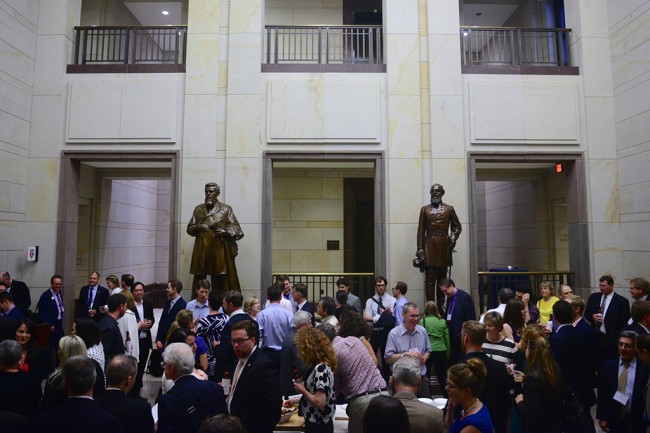
Photo by M.V. Jantzen
Every day in cities across the country, people make choices that determine how they will get from point A to point B. Personal choices factor in cost, convenience, and design, but a broader set of variables — including technology, land use policy, and access to various transit modes — underlie and facilitate these trips.
In June, the “Innovation in Mobility Public Policy Summit,” sponsored by the Association for Commuter Transportation, Transportation Sustainability Research Center, Mobility Lab, Transit Center, and Shared-Use Mobility Center, brought together a range of participants to discuss these themes in Washington, DC. At the summit, elected officials, transportation entrepreneurs, academics, and developers engaged with a number of questions including, “What are new ways of solving urban mobility problems? How can we better design systems to address the needs of the public? Who should be engaged to make this happen?” The gathering was an extension of the first shared-use mobility summit that took place in San Francisco in October 2013, and was a platform to announce the launch of the Shared-Use Mobility Center, whose purpose is to accelerate the availability, equity, and impact of new transportation models. Throughout the two days, these speakers addressed a range of issues such as how to facilitate seamless integration across modes, how to accommodate a wider demographic of users, how to bridge the first/last mile gap, and how best to leverage technology and open data.
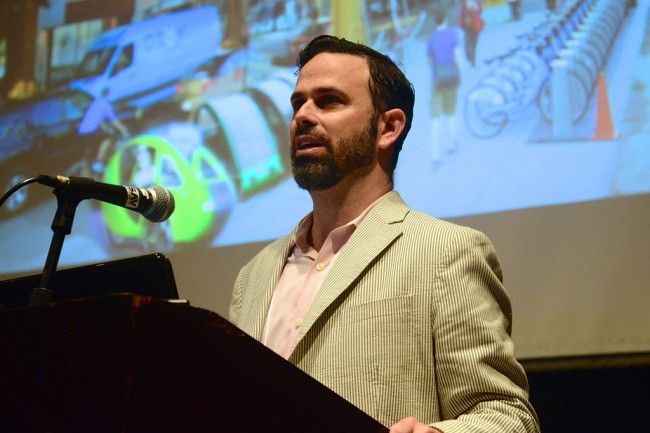
Gabe Klein, Senior Visiting Fellow at the Urban Land Institute | Photo by M.V. Jantzen
The summit comes at an important time as rideshare services face increased scrutiny from legislators and opposition from many taxi and limousine operators. Chicago, Seattle, and Milwaukee are just a few cities that have recently formulated legislation to regulate such services. These regulatory issues overlay broader trends of increasing urbanization, a reduction in car ownership, and the growth of what’s loosely known as the “shared economy.”
The concept of “shared use,” as it is defined by the Shared-Use Mobility Center, is broad, ranging from traditional public transportation services, such as buses and trains, to ridesharing, Transportation Network Companies (TNCs), and commercial delivery vehicles providing flexible goods movement. It includes both peer-to-peer services as well as those provided by third party operators, and it is known for being social, convenient, and technology-oriented.
The summit kicked off with Josh Kavanagh, the President of the Association for Commuter Transportation, who discussed the critical role of policy in ensuring equal access, lowering barriers to mobility, and improving the availability of information for consumers that will allow them “to make more meaningful choices.” He also spoke of the importance of managing unintended consequences and externalities of new mobility choices, especially in light of the accelerating pace of innovation. He echoed a theme of the day — that policies should encourage, reward, and support innovation in mobility.
His talk was followed by Kaye Ceille, President of Zipcar, who detailed how the “social contract” concept between providers and users has enabled multiple variations of shared uses to thrive. Specifically, the idea of customers as collaborators and custodians, where they adhere to and have a common understanding of a shared set of rules, has resulted in customers treating cars more as personal extensions than public spaces.
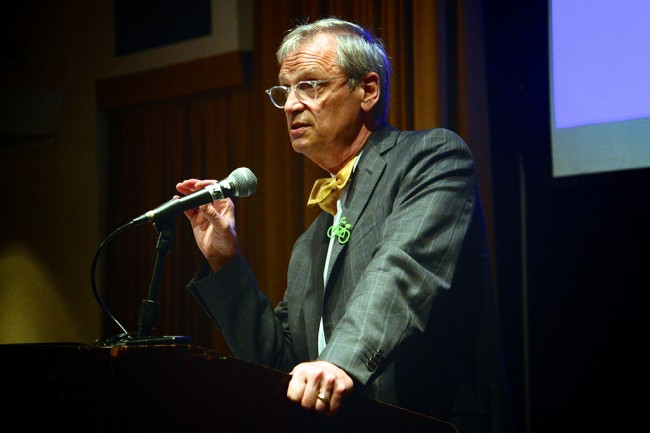
Congressman Earl Blumenauer | Photo by M.V. Jantzen
Congressman Earl Blumenauer from Oregon provided a policy-oriented angle to the morning session. He talked about the ongoing “revolution in transportation,” and how for the past nine years, average vehicle miles per capita in the United States has been decreasing as people are driving less. The immediate challenge from a government standpoint is funding for transportation. The transportation trust fund is depleting and state governments are scaling back projects in response. He raised the point that politicians need to ask citizens the right questions to understand how best to use limited resources. He discussed some of the policies he has implemented in Portland, one of which was partnering with a local university to create a class on transportation, funded by the local council, where students were tasked with solving a transportation problem in their own neighborhoods. Congressman Blumenauer described the two pieces of legislation he’s introduced in the House — one a 15 cent gas tax increase over three years, indexed for inflation, to enable a 6-year transportation funding reauthorization, and another to extend a vehicle-mile-traveled fee. Both, according to Congressman Blumenauer will “stabilize and create a more fair and equitable transportation finance.” He urged the audience to examine both pieces of legislation to determine what they mean and how they will make an impact.
A question posed during the Q&A session that followed asked how political will can be fostered among the public. The panelists responded that marketing will play a key role in building support around shared use programs. For example, the public can be engaged in crowdsourcing to determine where new stations should go and what the name or identity of the program could be. The goal is to educate citizens to think about bike share as another part of city government’s suite of services. When the public recognizes that bike share is another mode of transit — a publicly subsidized program — then they can more forcefully advocate for it to be funded.
Social equity was a major issue that came out of the first summit and was echoed during this session by Susan Shaheen, Co-Director of the Transportation Sustainability Research Center at the University of California, Berkeley, who helped launch the San Francisco summit with the goal of bridging silos in the shared use space. Shaheen and others expressed the imperative to balance open data sharing with privacy, especially as technology rapidly evolves. She ended the first plenary session by presenting the results of research she is conducting in the shared use space and the important role of shared use modes. GIS analysis has shown that in areas where the public transit network is less comprehensive and far-reaching (in Salt Lake City, for example), bike share serves as an important “last mile” connector. In the urban core, where the transportation network is robust and developed, bike share plays a larger role in connecting people to other transit modes.
The second morning session, titled “You Complete Me — How Local Governments Are Using Innovation to Complete Multimodal Transportation Systems” — focused on the strategies used by local governments to promote and integrate shared mobility options with existing services to create a more multimodal system.
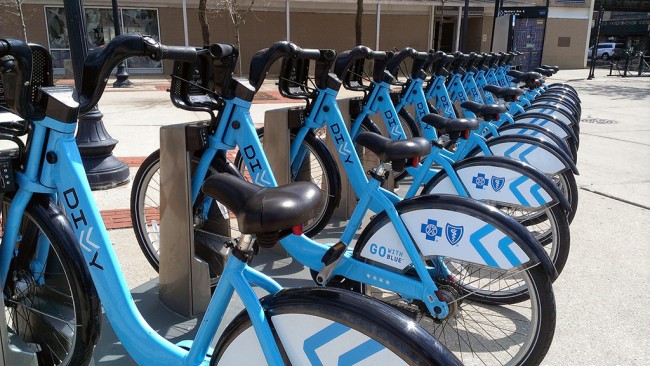
Divvy bike share in Chicago | Photo via Charles Carper
Luann Hamilton, Deputy Commissioner of Transportation for the City of Chicago, opened the panel. Her story began with the adoption of Complete Streets policy in 2006 through the launch of Divvy bike share in 2013, and ended with how the city is adapting to ridesharing and transportation demand management programs. Chicago has integrated bike share into its Complete Streets policy and it is treated as a mode of transit by the city (rather than simply a connector to other forms of transit). The bike share system was consciously integrated into transit-oriented development, and stations have been located within a block of nearly every Chicago Transit Authority station. Hamilton stressed how connections to other transit modes are essential to the success of bike share, in addition to helping solve the “first and last mile problem,” the challenges and extra time it takes to travel to and from a transit station to a final destination. She described how bike share was implemented in Chicago, using a public engagement process in which data was shared through its website and residents suggested station locations. Chicago partnered with 1871, a co-working center for digital startups, to sponsor a data challenge to analyze and illustrate rider data for the public to better understand how Chicago gets around on Divvy. She stressed that a key component of building public support around bike share is public access to information. The lessons learned from the Chicago example are applicable to cities across the country, regardless of size. For bike share to be successful, it should be treated as another mode of transit, with stations in densely populated commercial or residential areas and with links to other transit modes. Complementary infrastructure (such as protected bike lanes), robust public engagement, and a customer service focus are also important. These strategies have resulted in over 1.33 million Divvy trips taken in less than one year, with an annual membership of over twenty thousand riders in its first year of operations.
Hamilton segued into ridesharing, another new mode that Chicago is engaging on a policy level. The goal of a ridesharing ordinance passed by the City Council on May 28, 2014, is to increase public safety, protect consumers, and meet demands for innovative transportation options. The taxi industry challenged city government with its concerns that new forms of competition will impact it. In response, the Council modified the ordinance and made it two-tiered; companies for which average drivers work less than twenty hours per week face less stringent requirements than those drivers who work more than twenty hours per week. The ordinance also contains protections to control surge pricing and provide better information to consumers up front. One of the key challenges with shared use mobility within the urban core has been negotiating parking; currently, most parking for car sharing services in Chicago has been private; but the city is working on a long-term curbside use management plan which will consider the potential for on street parking for peer-to-peer car sharing.
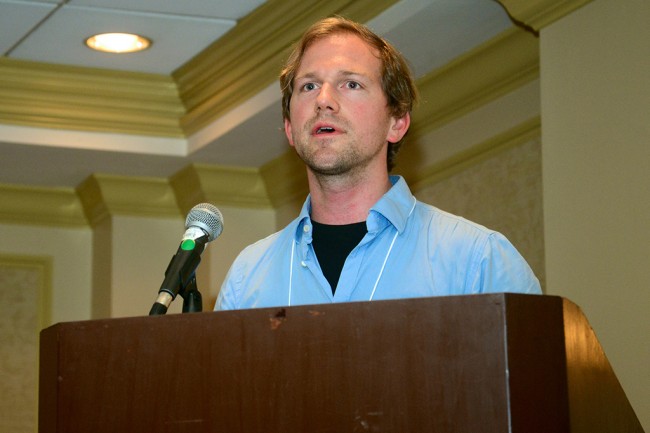
Benno Bock, Transportation Engineer at InnoZ | Photo by M.V. Jantzen
Chicago is also expanding its efforts to make its citizens more comfortable with alternatives to auto use. A team from the transit agency is tasked with going into each of the communities and working with local community organizations to spread the word about alternative transport options. The goal is to build a sense of community around walking and biking.
Next, Hillary Norton, the Executive Director of the Los Angeles-based non-profit Fixing Angelenos Stuck in Traffic (FAST), explained how her organization has created a First/Last Mile Strategic Plan. Los Angeles drivers spend on average about ninety hours per year in traffic. One of the solutions identified by the strategic plan is the implementation of mobility hubs: multi-use spaces around transit stations that offer services like 24-hour restrooms, air conditioning, community wayfinding, electric vehicle charging stations, Wi-fi, and personal portals where people can upload Fitbit data and explore rideshare options, job listings, apartment rentals, college class offerings, and more. The first challenge of implementing a mobility hub was getting buy-in from a number of industries, including the Los Angeles Business Council, to expand the developable area around stations. The second challenge was designing a hub that promotes and fosters a sense of safety. The first phase of the program is being funded by a Job Access Reverse Commute (JARC) Grant administered by the Federal Transit Administration. The idea of this program is to expand mobility options and connect to a social network that will give people “a place to meet up, a place to talk about rideshare, and a place to introduce people to new technology.”
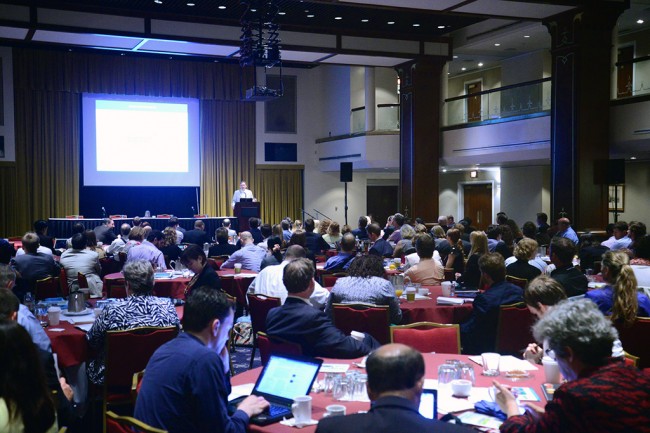
Photo by M.V. Jantzen
Bibiana McHugh, the IT Manager of GIS and Location-Based Service at Portland’s TriMet, presented the next case study. TriMet uses a General Transit Feed Specification (GTFS) that was created in conjunction with Google in 2005, with the goal of making transit directions as easy to obtain as driving directions, with real-time information and service alerts. Today GTFS is used by more than seven hundred agencies worldwide. TriMet is currently working to better integrate its transit apps with social media. McHugh stated that her vision with these apps is to offer and expand them to include multimodal “supernetworks” that contain data on all types of transportation. TriMet has also worked with OpenStreetMap, a crowdsourced Wikipedia of sorts for maps, and Open Trip Planner, which uses open data to generate a multimodal routeable network. Today, local developers around Portland are building modules on top of Open Trip Planner that identify areas of connectivity or lack thereof.
McHugh illustrated how one of the primary challenges with regards to open data is obtaining support at the corporate level and justifying the business case for data sharing. Although many car share and bike share companies are slowly starting to release ridership data, she advocated that policies should incentivize both riders and providers. She calls for a “trans data exchange,” a single source of all car share, ride share, bike share, and transit data available in a format that can be easily accessed by developers.
The day concluded by shifting the discussion from the perspective of the providers to that of the end users. Specifically, whether current transportation systems are meeting the changing and evolving demands and expectations of the public and what can be done to respond to changes in demographics, ridership, and market conditions.
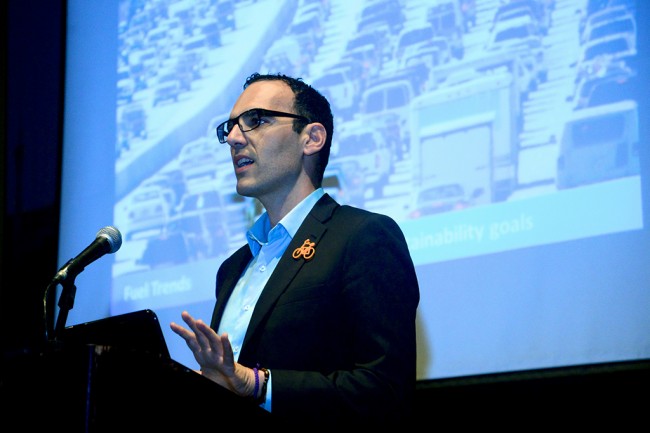
Timothy Papandreou, Deputy Director of the San Francisco Municipal Transportation Agency | Photo by M.V. Jantzen
Dr. Kari Edison Watkins, who works at the Urban Transportation Information Lab at the Georgia Institute of Technology, focused the last session on information, specifically, how to enable riders to use open and real-time data to make more informed decisions. Phineas Baxandall, a Senior Analyst and Program Director at the US Public Interest Research Groups, specializes in national policy as it relates to taxation. He introduced some of the work he’s done in collaboration with the Frontier group. He discussed the cultural shift in American cities, where owning a car no longer represents “freedom;” rather, “there’s a value to the social or common experiences that we share,” especially being part of a collective experience.
Fittingly, the day ended with a discussion of Capital Bikeshare, the local bike share system in Washington, DC. Darren Buck, who manages the long-range planning and bicycle program for the DC Department of Transportation, provided an overview of the program and its users. Because of the unique heavy tourism use of its bike share program, Buck described how the system is “exporting bicycling to the rest of the country.”
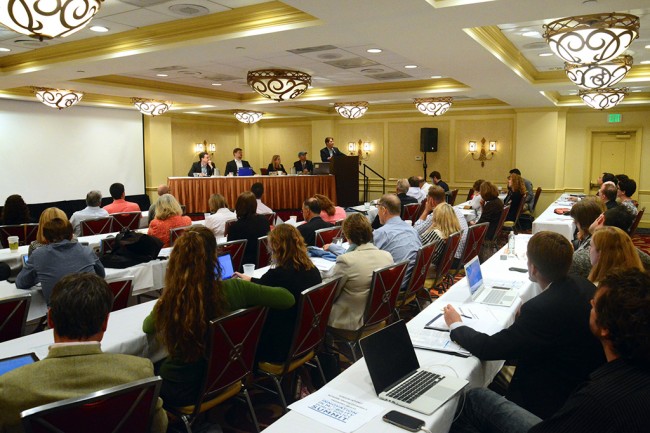
Photo by M.V. Jantzen
Shin-pei Tsay, Director of Research and Development at Transit Center and session moderator, described the palpable excitement throughout the two-day summit and observed that there are still many issues that remain to be tackled, including addressing questions such as, “How does shared use mobility contribute to the overall well-being of a city for people? “Right now you’d think that we were working to design a city for mobility, not a city for people,” she observed. “Sometimes the purpose of these solutions, which is to improve people’s quality of life, to relinquish time from travel for more meaningful activities, is lost in the mix. We have to tweak the discussion so we don’t forget what we’re working for.”
The way that states and localities navigate policy around these new transportation services will be critical to the future of the shared-use sector. Ultimately, the success of the ideas presented during the summit rests on the collaboration and partnership among a number of actors, including community residents, public transit agencies, government leaders, planning and development bodies, taxi and limousine commissions, and shared-use providers. Shared use must be seen as complementary to existing services, not as antithetical to traditional forms of transport, and integrated into broader land use policy in order for a transportation network to bring mobility options to underserved areas and to be a truly seamless system across modes.
The views expressed here are those of the authors only and do not reflect the position of The Architectural League of New York.